10 Best Cameras for Beginners in 2024 – Reviews & Top Picks
Last Updated on
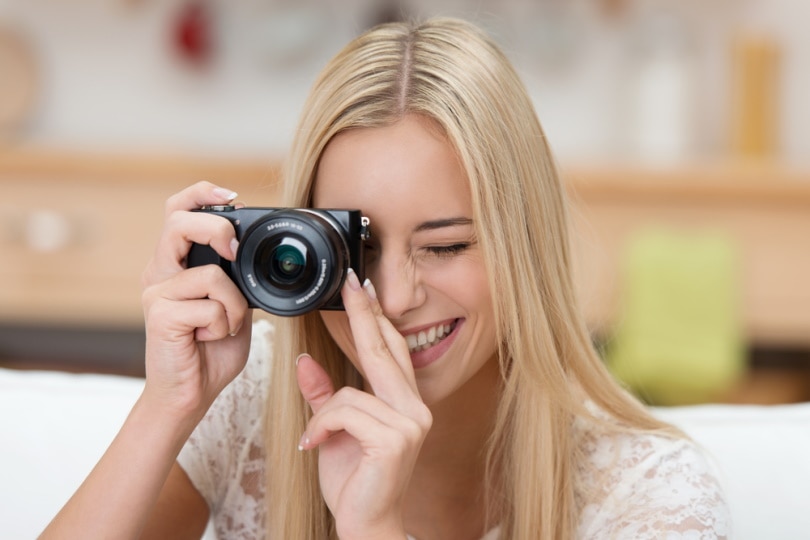
Taking photos on your cell phone is easy until your battery or storage runs out! And what if you want to snap a photo underwater? Could your cell survive a fall on the slopes while you’re out skiing? Well, maybe it could, but we wouldn’t recommend you try it!
These are just a couple of scenarios where you’d probably want a camera for the job of…well, taking photos. Besides, photography is a great hobby to get into, and as advanced as some phone cameras are becoming, they’re just no match for the incredible photographs that can be captured using a good camera.
Whatever your reasons for wanting a camera, we hope that our list of reviews will help you find the best product to match your needs.

A Quick Comparison of Our Winners (2024)
| Image | Product | Details | ||
|---|---|---|---|---|
| Best Overall |
 |
FujiFilm X-T30 Digital Camera |
|
CHECK PRICE |
| Best Value |
 |
Olympus OM-D E-M10 Mark III |
|
CHECK PRICE |
 |
Ricoh WG-6 Digital Camera |
|
CHECK PRICE | |
 |
Panasonic LUMIX FZ80 4K Digital Camera |
|
CHECK PRICE | |
| Best for Underwater Photography |
 |
SeaLife Micro 3.0 Digital Camera |
|
CHECK PRICE |
The 10 Best Cameras for Beginners In 2024
1. FujiFilm X-T30 Digital Camera – Best Overall
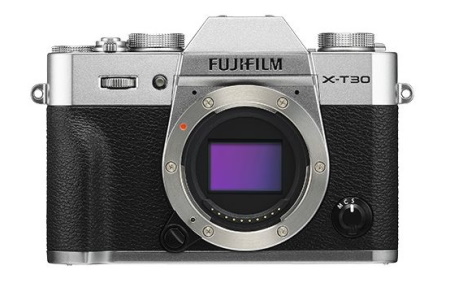
| Video Quality | 4K / 30fps |
| Megapixels | 1 MP |
The FujiFilm X-T30 is the best overall camera for beginners for this year, and for good reason.
If you have the budget for it, the FujiFilm X-T30 is a camera you can grow into as your knowledge and skills in photography expand. Not only is this small but powerful camera capable of capturing fantastic high-resolution images in most lighting conditions, but it’s also capable of recording 4K/30p ultra high-def videos for up to 10 minutes.
One of the understated benefits of this camera is its capability to perform burst shooting at a rate of up to 30fps while maintaining autofocus and autoexposure. This is an important feature for beginners who wish to take rapid-fire photographs of high-speed or moving objects, such as birds, wildlife, or during sports. In fact, the advanced auto setting on the X-T30 will choose the perfect exposure and autofocus on any target, at the flick of a switch.
Overall, it’s difficult to find negatives when it comes to the FujiFilm X-T30. As with most interchangeable lens cameras, the body of the camera comes separately from the lens, although most retailers will include a starter lens as part of a deal.
- High-quality photographs
- Burst shooting for fast-moving objects
- Quick autofocus
- Expensive
2. Olympus OM-D E-M10 Mark III – Best Value

| Video Quality | 4K / 30fps |
| Megapixels | 16 MP |
When it comes to cameras, Olympus is a brand you can trust for a solid build and excellent quality. The Olympus OM-D E-M10 Mark III is a compact mirrorless camera, with all the capabilities of both a point-and-shoot and a DSLR. If you’re a beginner at photography, you can rely on the camera’s auto mode to choose the correct settings, until you’re confident enough to capture images in manual mode.
The OM-D E-M10 Mark III comes with a 14-42mm lens, but being a mirrorless camera, you can pick and choose from an array of lenses to best suit both the image you want to capture and your style.
Although this camera is capable of filming in razor-sharp 4K/30p mode, the picture quality is limited to 16 MP, which seems dated when compared with some of the pricier options on our list. On the other hand, it does come with a 5-axis image stabilization feature to help you capture blur-free, crystal photographs without a tripod, even in low light.
The Olympus OM-D E-M10 Mark III is the best camera for the money, ideal for those who are serious about getting into photography but aren’t ready to splurge on a FujiFilm X-T30 just yet.
- Built-in Flash
- Compact size
- Affordable
- Less than 20 MP
3. Ricoh WG-6 Digital Camera
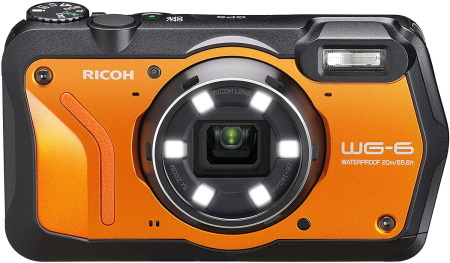
| Video Quality | 4K / 30fps |
| Megapixels | 20 MP |
If you’re looking for a camera that’s robust enough to handle your outdoor adventures, the Ricoh WG-6 is a great option. The Ricoh WG-6 is shockproof, waterproof, freezeproof, and crushproof. In short, it’s ideal for those who want a camera they can stuff into their pocket or backpack and go, with the safe knowledge that it’s tough.
This heavy-duty yet light camera is easy to use, allowing you to take great underwater photographs, 4k quality videos, and action shots.
One of our favorite features is the ring of variable-light LEDs that surround the lens on the Ricoh WG-6. Each light can be individually controlled to create the lighting that’s optimal for your photograph. The feature is especially useful when taking advantage of the camera’s digital microscope mode to take photos of extreme macro closeups.
The Ricoh Wg-6 is reasonably priced too, offering buyers the chance to take semi-pro shots without spending a fortune.
However, this camera doesn’t perform brilliantly when it comes to shooting in low-light conditions, and the fast shutter speed makes it near-impossible to take long-exposure shots. That said, if you’re looking to take photos of the night sky, you probably don’t need a crushproof camera.
- Extremely robust
- Waterproof to approximately 65 feet
- Shake reduction feature perfect for actions shots
- Digital microscope mode for macro shots
- Not suitable for very dark or night-time shots
4. Panasonic LUMIX FZ80 4K Digital Camera
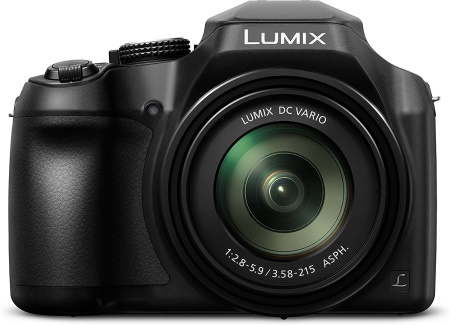
| Video Quality | 4K / 30fps |
| Megapixels | 18.1 MP |
The Panasonic LUMIX FZ80 is a bridge camera, which means that it sits somewhere between a point-and-shoot and a DSLR. It has a fixed lens, with an incredible 60x zoom range, and performs very well in low light.
If you are looking to try your hand at taking photographs of the night sky, then the low light performance, and long zoom function of this camera will give you some impressive shots of both the moon and the stars.
When it comes to picture quality, this camera shoots at 4k/30p, though its small image sensor results in an image resolution of 18.1 MP—most of its competitors can achieve 20 MP or higher. This camera will never offer the same flexibility as a mirrorless or DSLR, but given its low price tag, it represents great value and bridges the gap between amateur and professional photography.
- Incredible zoom
- Optimized for low light
- Wi-Fi
- Less than 20 MP
5. SeaLife Micro 3.0 Digital Camera – Best for Underwater Photography
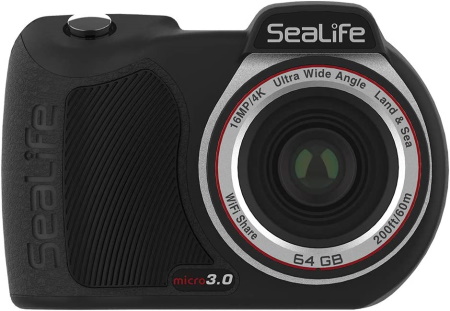
| Video Quality | 4K / 30fps |
| Megapixels | 16 MP |
The SeaLife Micro is a great camera for beginners interested in capturing all they see and experience during their underwater dives. It’s a simple point-and-shoot camera, with a high shutter speed that copes well with movement.
The high-resolution images that the SeaLife Micro captures are crisp and vibrant. Its wide-angle lens allows you to cover a large area, making it easier for you to take underwater seascapes, even at a close distance to the main subject of your photo.
Although this camera is built for use underwater, it can also take decent pictures on land with various settings to accommodate. Aside from high-quality photographs, the SeaLife Micro can also record 4k/30p video.
Overall, this is a great option for an underwater camera; however, it does come with a high price tag. The price of the camera is further increased when spending to invest in a light set, but we recommend you do, because a light set can elevate the quality of your photographs by adding vibrance and clarity. In our opinion, the user-friendliness of this camera, coupled with the beautiful images it’s capable of producing, make it a worthwhile investment.
- Waterproof down to 200 feet
- User-friendly
- Excellent battery charge (3+ hours)
- Not great at macro shots
- Expensive
6. Canon EOS 4000D DSLR Camera
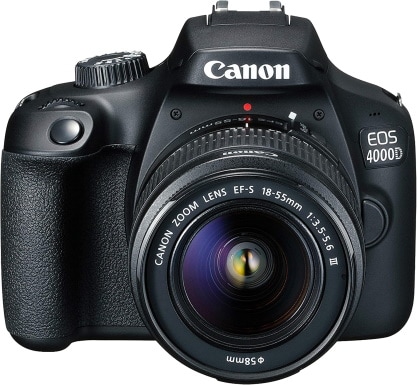
| Video Quality | 1080p / 30fps |
| Megapixels | 18 MP |
The Canon EOS 4000D DSLR camera is a good option for beginners who are serious about getting into photography. Like all DSLRs, it comes with an interchangeable lens, giving you the opportunity to experiment with different types of photography.
This DSLR performs well in low light, making it a good choice for night-time shots. It also has a convenient pop-up flash built-in, which can be very useful for macro photography and when taking close-up portraits.
Canons are known for producing images of great quality, and the EOS 4000D is no exception, however, there are areas where it could improve. For example, the body of the camera is made primarily of plastic, and though this contributes to a lighter feel, some people may not like it.
Even so, the Canon EOS 4000D is one of the best choices for beginner photographers, not to mention it comes at an affordable price.
- Good image quality
- Fast shutter speed
- Good low-light performance
- No 4k video
7. Canon PowerShot G9 X Mark II
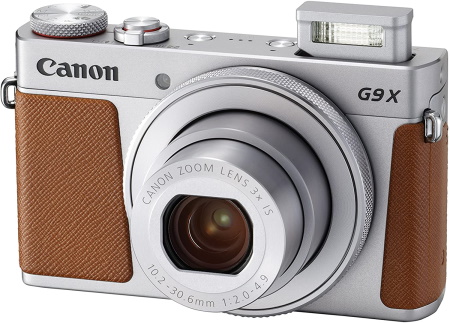
| Video Quality | 1080p / 60fps |
| Megapixels | 20.1 MP |
The Canon PowerShot G9 X Mark II is a great option if you’re looking for something better than your mobile to take pictures with, but don’t want to spend a fortune. Owing to an image sensor that’s about 4 times the size of the ones in mobile phones, this camera can take detailed, clear shots, even in low light.
Unlike some of the other options on our list, this camera does not shoot footage in 4K, instead, it records video at 1080p.
This camera has a 3x optical zoom, which is not the best reach on the list. That said, it still works great as an entry-level point-and-shoot camera for those who don’t want a DSLR. With eight pre-set “picture style” options to choose from, this camera offers some control over the kind of photograph you’d like to take, without complicating the process.
In summary, this is a great compact camera, which is ideal for saving the battery on your mobile when you’re out and about. The PowerShot G9 Mark II also has Wi-Fi, which allows you to transfer your photos to another device quickly, and easily.
- Wi-Fi
- Pocket-sized
- Good image quality
- No 4k video
- Limited zoom range
8. Nikon Coolpix L340 Camera
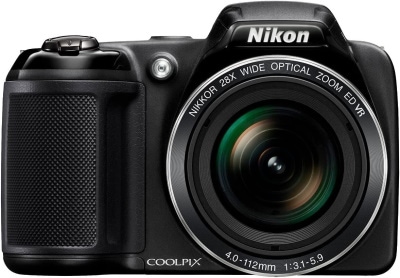
| Video Quality | 720p / 30fps |
| Megapixels | 20.2 MP |
The Nikon Coolpix L340 is one of two bridge cameras on our list. It boasts a powerful 28x optical zoom, which can be supplemented by its dynamic digital zoom to achieve an impressive total of 80x magnification. This camera doesn’t impress as much on video quality, which pales in comparison to some of its competitors.
But, given its very affordable price, we think the Nikon Coolpix L340 makes for a great entry-level choice for those on a tight budget who are serious about getting into photography.
Full zoom on this camera can get a little blurry, so we recommend using a tripod for more stabilization. But overall, the Nikon Coolpix has a long-lasting battery charge, it’s easy to use, affordable, and a big step up from using your smartphone.
- Easy to use
- Very affordable
- Great picture quality
- Low video quality
9. Sony DSCW800 20.1 MP Digital Camera
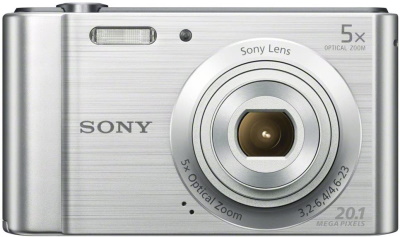
| Video Quality | 720p / 30fps |
| Megapixels | 20.1 MP |
Like the Canon PowerShot, Sony’s compact DSC W800 digital camera can be carried around in your pocket or handbag for convenience, making it a great everyday or travel camera.
The Sony DSC W800 is an easy-to-use point-and-shoot digital camera, with an impressive 20.1 MP sensor capable of capturing good-quality photographs.
Sony’s compact camera could improve on a few aspects, however. Aside from a slow shutter speed, which could cause some photographs to become blurred, there’s also a noticeable delay after an image is captured, before the camera is ready to go again.
But, if you have the patience to wait a couple of seconds after each shot, and you’re on a low budget, then this camera takes decent photos, and it’s one of the cheapest options available to beginner photographers.
- Pocket-sized
- Good image quality
- Low price
- Low video quality
- No Wi-Fi
10. Polaroid Go Instant Camera
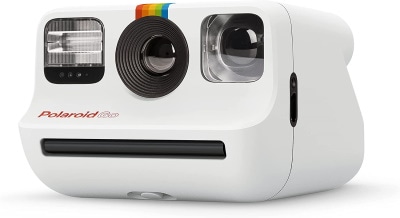
| Video Quality | None |
| Megapixels | N/A – Analogue |
If you’re looking for something different, then the Polaroid Go Instant Camera is a fun, compact, and affordable option.
The Polaroid Go is an analog instant camera that’s palm sized. Its portability means you can carry it with you wherever you go, ready to snap a shot when an opportunity presents itself, then print the results instantly, ready to share with your friends and family in just minutes.
The Go certainly makes for a fun and convenient option, however, even with its in-built flash, it struggles with indoor, and low-light shots, producing results that are often underexposed. And with an analog camera, there is the continuous cost of film to factor in — a cost that quickly adds up when you’re having fun snapping shots.
Another aspect to consider is that your images won’t be backed up in any form. Unlike with a regular analog where you would be left with negatives, Polaroids and other instant cameras burn the image straight onto the film. But, if you’re happy to accept these pitfalls, then the Go will let you fill a scrapbook and blanket your fridge with miniature memories, in a way that’s unique to instant analog cameras.
- Portable
- Instant print
- In-built flash
- Image not saved digitally
- Film is expensive

Buyer’s Guide: How to Pick the Best Cameras for Beginners
When it comes to finding the right camera, there are so many types available, that in the end, it comes to personal preference, and of course, budget. If you know what you’re looking for, you should be able to find a camera that fits. To help you decide, we’ve put together a quick guide that explains the different types of cameras that we’ve reviewed, and what key decision-making factors you should be aware of.
Camera Types
Compact (Point-and-shoot)
As the name suggests, these cameras are small, portable, and are often used to capture everyday photographs. Most of these cameras come with a limited number of pre-set options to choose from, but you will not be able to control the focus, exposure, or shutter speed manually. When shopping for these cameras, you should compare the photo quality with that of your smartphone, as many will not surpass it.
Some point-and-shoot cameras are built with a specific purpose – for example, in our review, we looked at the Ricoh WG-6, built to be rugged and shockproof, and the SeaLife Micro 3.0 – built specifically for use at great depths underwater.
Bridge camera
Bridge cameras are a step up from compact cameras. Aside from being larger and heavier in size, they offer many of the options that a DSLR or mirrorless camera might, but unlike DSLR and mirrorless cameras, bridge cameras have a fixed lens. Usually, the lens on these cameras will have a very long zoom range. Bridge cameras often have flash built-in, an important feature for taking portraits and extreme closeups.
DSLR
A digital single-lens reflex camera, or a DSLR, is a digital camera with interchangeable lenses. DSLR cameras can offer everything from auto functions to complete manual control for taking your photographs. They are used by professionals to create excellent results.
When light enters through the opening of a DSLR camera, the image is reflected by a mirror into an optical viewfinder. As the button is clicked to capture the image, the mirror lifts, allowing the light to hit the digital sensor, thereby capturing the photograph and storing it.
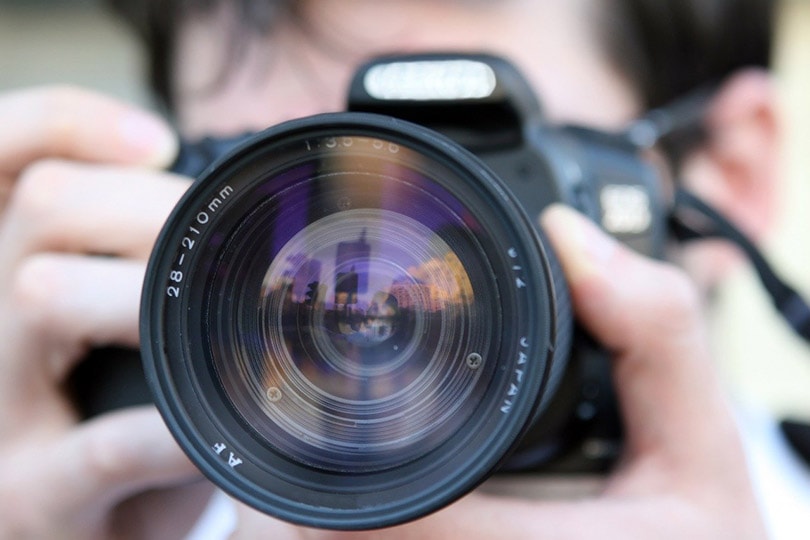
Mirrorless
Mirrorless cameras work in a similar way to DSLRs, in that they are also digital cameras with interchangeable lenses. They offer the same range of capabilities as DSLRs too and make a perfect camera for both photography enthusiasts and professionals.
Unlike DSLRs, mirrorless cameras do not have an optical viewfinder. There’s no internal mirror to reflect the light up into the viewfinder. Instead, the light hits the digital sensor directly, creating a digital image that can be viewed on an LCD screen on the back of the camera, or through a digital viewfinder.
Analog
Analog cameras will not save your images digitally. They are loaded with film stock that’s coated with chemicals. These chemicals react when exposed to reg, green, and blue light, in a way that creates the full spectrum of colors we’re used to.
The film, which is at this point the unprocessed negatives, is then developed onto photographic paper.
The Polaroid Go, which we have reviewed, is an instant analog camera. This means that the images taken by the Go are directly exposed to a special type of photographic paper that develops within minutes, eliminating the need for negatives, or the process of developing them in a traditional darkroom.

Key Factors to Consider
Aside from finding a camera that fits your budget, here is a list of key factors to consider when shopping for your camera.
Video Quality
Depending on what you are hoping to use your camera for, you might not need to be able to capture 4K or even high-definition videos. Plenty of streamers post videos to YouTube that have been captured in 720p, for example. On the other hand, if you own a 4K television or monitor, or you’re thinking of showcasing your films on a large screen, the 4K resolution will make a big difference.
Image quality
Some of the cameras on our list, such as the FujiFilm X-T30 Digital Camera, can take razor-sharp images that smartphones couldn’t dream of achieving. For example, the iPhone 13 takes incredible pictures with its 12 MP sensor, whereas the FujiFilm X-T30 manages 26.1 MP.
But there are cameras out there that don’t produce great quality images, which is why checking the resolution, measured in megapixels, is important. We’ve reviewed the best options available for this year.

Low Light Performance
If you’re looking for a camera for everyday outdoor photography, this probably won’t be an important factor for you to consider.
However, if you’re thinking about capturing night-time cityscapes, photos of the night sky, or even advanced astrophotography, you need a camera that you know will perform well in low light. Most DSLRs and mirrorless cameras will give you the manual controls over the ISO, shutter speed, and aperture to be able to adjust your settings for night photography. The advantage of using a DSLR or mirrorless camera is that you can then purchase the ideal lens for the job – a fast lens with a very low maximum f-stop.

Conclusion
There are many options available when it comes to cameras for beginners in 2022, but hopefully, our reviews will help you make an informed decision on which one is right for you.
Our top pick remains the FujiFilm X-T30 Digital Camera because the outstanding quality of the images it produces remains unmatched by other cameras in the same price range, and it records footage in 4K. It’s also a versatile camera that can last you many years, keeping up with you even as your photography skills advance
For best value, we recommend the Olympus OM-D E-M10 Mark III, the little camera that packs a punch.
Whichever camera you decide to go with, don’t be afraid to experiment with the settings, and have fun!
Featured Image Credit: stockfour, Shutterstock
Table of Contents
- A Quick Comparison of Our Winners (2024)
- The 10 Best Cameras for Beginners In 2024
- 1. FujiFilm X-T30 Digital Camera – Best Overall
- 2. Olympus OM-D E-M10 Mark III – Best Value
- 3. Ricoh WG-6 Digital Camera
- 4. Panasonic LUMIX FZ80 4K Digital Camera
- 5. SeaLife Micro 3.0 Digital Camera – Best for Underwater Photography
- 6. Canon EOS 4000D DSLR Camera
- 7. Canon PowerShot G9 X Mark II
- 8. Nikon Coolpix L340 Camera
- 9. Sony DSCW800 20.1 MP Digital Camera
- 10. Polaroid Go Instant Camera
- Buyer’s Guide: How to Pick the Best Cameras for Beginners
- Camera Types
- Key Factors to Consider
- Conclusion
About the Author Cheryl Regan
Cheryl is a freelance content and copywriter from the United Kingdom. Her interests include hiking and amateur astronomy but focuses her writing on gardening and photography. If she isn't writing she can be found curled up with a coffee and her pet cat.
Related Articles:
How to Clean a Refractor Telescope: Step-by-Step Guide
How to Clean a Telescope Eyepiece: Step-by-Step Guide
How to Clean a Rifle Scope: 8 Expert Tips
Monocular vs Telescope: Differences Explained (With Pictures)
What Is a Monocular Used For? 8 Common Functions
How to Clean a Telescope Mirror: 8 Expert Tips
Brightfield vs Phase Contrast Microscopy: The Differences Explained
SkyCamHD Drone Review: Pros, Cons, FAQ, & Verdict



